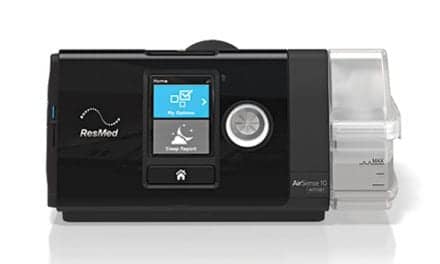Warning: Undefined array key "file" in /www/respiratorytherapy_860/public/wp-includes/media.php on line 1723
Reading Hospital’s Respiratory Care Department had small beginnings but has built a strong tradition of success in patient care.
By Lester Cash, MBA, RRT
|
|
Reading Hospital in West Reading, Pa, officially opened in 1868 as a small dispensary with a small number of physicians and no formally trained nurses. As the community grew, so did our hospital, and today, Reading Health System—with Reading Hospital as its flagship—has more than 7,300 team members, including 110 respiratory therapists.
Consisting of 22 buildings spread across a 36-acre suburban campus and a nearby post-acute campus, Reading Hospital is licensed for 727 acute care and 50 skilled care beds. We provide comprehensive acute, post-acute rehabilitation, trauma, behavioral, and occupational healthcare; as well as maintain the busiest single-hospital emergency department in the state. Our Respiratory Care Department is an integrated component of this vast medical complex, and is responsible not only for respiratory therapy, but also for pulmonary rehabilitation, electroencephalography (EEG), pulmonary function testing (PFT), and sleep studies.
Small Beginnings
|
|
We began as an Inhalation Therapy Department in the late 1960s. Under the direction of RN supervisors, men and women hired as On-Job-Trainees were taught to administer intermittent positive pressure breathing treatments. By the 1980s, the department was led by individuals with specific backgrounds in respiratory care, and, according to clinical specialist Doreen Fura, RRT, a staff member since 1983, its responsibilities included coverage for general nursing units, the ED, and the recently opened surgical intensive care unit.
While the hospital also had a medical ICU at this time, RTs were called to its location only in the event of a ventilator problem. In fact, the code team of the 1980s included an RT only if the patient involved was in the SICU, a unit initiated with the start of Reading Hospital’s open heart surgical program in 1980. By the time office manager Sue Guldin joined our staff in 1992, the Respiratory Therapy Department, as it was known, consisted of 35 therapists, and had direct responsibility for the PFT lab, sleep lab, and EEG lab. The department name was changed to Respiratory Care early in the 2000s to better reflect the growing extent of services provided by our team of experts.
Today, respiratory therapists at Reading Hospital are present everywhere there are patients who may require our expertise: all nursing units, including the medical, surgical, and neonatal ICUs; our Emergency Department and Trauma Center; and our centers for PFT, pulmonary rehabilitation center, sleep center, and EEG lab.
We are actively engaged in Reading Hospital’s academic mission, assisting in formal resident and nursing education. We are essential participants on every trauma and code team, and have affected protocols that include respiratory assessment and treatment, pediatric asthma, open heart, emergency, and oxygen therapy.
Growing our staff to meet the rising demand for services enables us to provide high quality, patient-focused care. In addition, our comprehensive training program for new hires, mandatory annual education to advance skills, and clinical CEU opportunities assure that all staff members maintain competence and grow expertise to continue meeting the changes in our field and in healthcare.
Newborn and Pediatric Focus
Reading Hospital is accredited as a Level III Neonatal Intensive Care Unit, which recently expanded to 30 beds. Essential members of the NICU’s multidisciplinary healthcare team, RTs are responsible for ventilator management using conventional and high-frequency oscillatory methods, intubation, and surfactant and nitric oxide administration. RTs also attend high-risk deliveries. Led by neonatal/pediatric clinical supervisor Jennifer Mahone, RRT-NPS, our team participates in daily rounds, collaborating with physicians, nurses, and other staff to develop the best treatment plan for each fragile newborn.
RTs at Reading Hospital also play an active role in patient care on our pediatrics unit. This role has intensified since the implementation of a pediatric asthma protocol, a collaborative effort involving RTs, nurses, and physicians that guides the assessment and treatment of asthmatic children from admission to discharge. This initiative has positively impacted clinical outcomes and significantly decreased the length of stay for pediatric inpatients.
Additional Services and Programs
|
|
Reading Hospital’s EEG Department was started in 1946 to perform electroencephalography for neurology patients. Now part of Respiratory Care, this department has expanded its services to include ambulatory epilepsy testing and video epilepsy monitoring for individuals with seizures or other neurologic problems. Its multidisciplinary staff evaluates and treats hospitalized and ambulatory patients.
Our PFT Lab provides diagnostic testing for inpatients and outpatients as young as six years of age. Staff also performs stress testing to support physicians’ evaluation of patients for our Pulmonary Rehabilitation Program, a special ambulatory service begun in 1996. The goal of this accredited center is to improve the quality of life for patients challenged by lung disease through a structured program of exercise, education, and support.
Reading Hospital began performing sleep studies in 1985 in a single-bed lab. This service has since expanded into a 10-bed center, combining the latest testing and monitoring equipment with the comfort and amenities of a fine hotel. Accredited by the American Academy of Sleep Medicine since 2010, our Sleep Center is staffed by RTs and registered polysomnographic technologists, who perform sleep diagnostic testing for inpatients and outpatients from newborns through senior citizens. Staff also hosts a sleep apnea support group, offering education and support to individuals undergoing treatment for obstructive sleep apnea and snoring.
Major Improvements
“The adult intensive care areas of the Reading Health System have certainly evolved since I started in the Respiratory Care Department in 1995,” says Steve Kohler, MBA, RRT, an adult critical care supervisor and clinical specialist. “We are now utilizing the role of the Respiratory Therapist to more of its full potential.”
After implementing RT/RN driven ventilator-weaning protocols, we have been able to reduce patient ventilator days by 50%. Our department was part of the Veterans Health Administration’s Transformation of the Intensive Care Unit (TICU) program, which helped reduce patient ventilator days, overall length of stay, and incidents of ventilator-associated pneumonia (VAP).
Reading Hospital became a trauma center in October 2005, a fact that has allowed us to train staff as first line responders for placing endotracheal tubes in emergency situations because, many times, we are the first to arrive during an emergent crisis. In addition, we began assisting bedside bronchoscopies in 2004, which enables the patient to remain in the ICU instead of being moved to another area of the hospital. That year we assisted with 21 procedures; in 2012, that number increased to 269 bronchoscopy assists.
Continuing Growth
As a growing campus, the role of the respiratory therapist at Reading Hospital is ever evolving. Within the next year, our ventilator information will stream instantaneously into our databases, allowing real-time monitoring and better management of our ventilator patients. Disease management, a relatively new responsibility, will become a major focus as Respiratory Care professionals support Reading Health System in its transition to a population health management approach to building a healthier community.
As director of Respiratory Care, I am very proud of the wonderful group of caring RTs we have at Reading Hospital. They are professionals who treat their patients with dignity and are committed to growing their expertise in support of excellent patient care. Supported by the entire Reading Hospital, our department will continue to have a vital role in advancing health and transforming lives in our community. RT
Reading Hospital
6th Ave & Spruce St
West Reading, PA 19611
(866) 988-4377
www.readinghealth.org


 Respiratory Care at Reading Hospital has played a major role in the hospital’s growth and success.
Respiratory Care at Reading Hospital has played a major role in the hospital’s growth and success. RTs perform regular stress test evaluations to support the department’s pulmonary rehab program.
RTs perform regular stress test evaluations to support the department’s pulmonary rehab program. Reading Hospital’s AASM-accredited Sleep Lab is a 10-bed center managed by RTs and RPSGTs.
Reading Hospital’s AASM-accredited Sleep Lab is a 10-bed center managed by RTs and RPSGTs.







